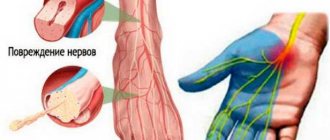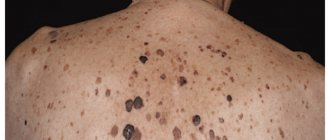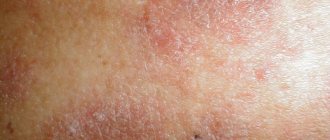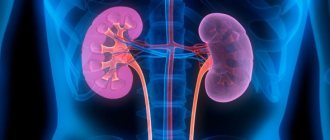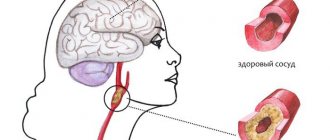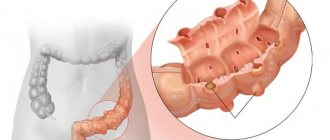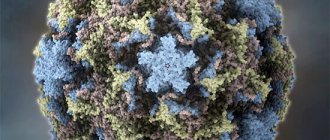Chalazion (chalazion, hailstone) is a chronic eye disease in which a benign neoplasm forms on the edge of the eyelid. This pathological process occurs against the background of inflammation in the eyelid as a result of blockage of the sebaceous (meimobian) gland. Hailstone develops gradually, manifesting itself as hyperemia, itching and other unpleasant symptoms. The pathology can be quickly cured conservatively and surgically.
Etiology of the disease
In the thickness of the eyelid there are sebaceous glands (about 50-70 pieces), the main function of which is to produce fatty secretion necessary to lubricate the edges of the eyelids and cornea, as well as moisturize the eyeball. Due to the normal functioning of the meibomian glands during blinking, friction between the edges of the eyelids and the eyeball is reduced, and the development of dry eye syndrome is prevented.
If for some reason the duct of the sebaceous gland becomes clogged, the oily liquid formed inside accumulates, causing inflammation of the eyelid. As fatty secretion accumulates, the size of the gland increases, and after some time a dense, benign, round-shaped neoplasm is formed, surrounded by a capsule. In ophthalmology, this compaction is called a chalazion or hailstone. What is a chalazion? This is an eye disease characterized by blockage of the sebaceous glands of the eyelid. Chalazion is often confused with an eye stye. These diseases indeed have similar manifestations, but require different treatment tactics.
Classification
If you are in doubt about what kind of eye disease you have, barley or chalazion, we advise you to see an ophthalmologist. The specialist will examine you, help you make a diagnosis, and prescribe the correct treatment.
Classification:
- Chronic chalazion is characterized by a long, stable course and has a formed capsule with dense contents.
- Abscess – when an infection is added to the chronic form. The contents of the capsule become inflamed, the eyelid swells, itching, pain, and irritation appear.
- An advanced disease is represented by a large tumor in the thickness of the eyelid, more than 1 cm, which becomes painful and interferes with blinking and vision.
According to localization, chalazion can be:
- upper eyelid;
- lower eyelid;
- both eyelids at the same time;
- right and left eyes.
Stages of the disease:
- The appearance of a tumor. The symptoms are similar to stye.
- Increase in tumor size. At this stage, a clear differentiation of the disease is carried out and etiological treatment is prescribed.
- Inflammation of a tumor on the eye. In case of lack of treatment and infection.
- Resorption or surgical removal.
- Stage of complications. Degeneration into a cyst or oncology. If you skip steps 2, 3, 4.
Frequent relapses of the disease can lead to the formation of several tumors in one eye. If the process is advanced or complicated, do not self-treat, seek help from a doctor.
Causes of chalazion
The main reason for the appearance of hailstones on the eyelid is a violation of the outflow of fatty secretions from the meimobian gland. What causes a neoplasm? This pathological phenomenon can occur under the influence of such factors:
- hypothermia of the body;
- inflammatory skin diseases (seborrhea, erythema);
- colds (ARVI, flu);
- failure to comply with personal hygiene rules;
- penetration of a foreign body into the eye;
- eye injury;
- improper use of contact lenses;
- gastrointestinal diseases;
- inflammatory eye pathologies.
Chalazion of the eyelids can arise from frozen barley, as a result of changes in hormonal levels, as well as under the influence of stressful situations or against the background of diabetes. The pathological process can occur at any age, but most often it is observed in men and women over 30 years of age.
Is this disease contagious or not? The disease is not transmitted to other people.
How is an eyelid chalazion formed?
On the eyelids, on their surface adjacent to the eye, in the mucous membrane there are several dozen meibomian glands that produce fatty secretions. The secret allows you to protect the delicate mucous membrane from the aggressiveness of tears containing enzymes.
When the excretory duct of a tiny gland is blocked, it is only 1–2 millimeters in diameter, the fatty contents accumulate, swelling the glandular cavity. The internal formation rises above the rest of the surface. When a stagnant secretion becomes infected, the gland and surrounding tissues gradually and slowly become inflamed, and a chalazion of the eyelid is formed.
Stages of development
Chalazion on the eye develops gradually, in several stages:
- At the initial stage of development, hailstones on the eye are small in size and outwardly practically invisible. There is no pain or other symptomatic manifestations; the lump is often discovered by chance.
- The lump on the eyelid has significantly increased in size; when palpated, it feels like a moving dense pea. There is severe swelling and pain when touching hailstones.
- If treatment was started on time, the chalazion that appeared on the eyelid will resolve. In the absence of therapy, the disease becomes chronic, the formation becomes large (0.5 cm in diameter) and puts pressure on the eyeball, causing blurred vision.
- If infected, the cyst becomes inflamed, causing the development of various complications. Spontaneous opening of the abscess chalazion may occur. If a cyst breaks through, a fistula often remains in its place.
It is best to remove a chalazion at the initial stage of the disease, when the likelihood of complications is minimal.
Consequences and complications
With timely diagnosis and treatment, chalazion has no consequences. If you ignore a hailstone for a long time and allow it to grow to 5 millimeters or more, there is a risk of complications:
- transfer of infection to the conjunctiva, cornea;
- chronic compression of the eyeball and irreversible decrease in visual acuity;
- formation of ulcers on the cornea;
- development of phlegmon of the century;
- fistula formation.
Treating these pathologies is tens of times more difficult and expensive than eliminating a small chalazion. But even with a successful outcome, scars will remain and the shape of the palpebral fissure will change. Therefore, you should not hope that the tumor will resolve on its own. It is better to enlist the help of an ophthalmologist and undergo a course of treatment.
Symptoms
The main symptom of an eye chalazion is the formation of a seal on the edge of the eyelid, which looks like a small pea. As the pathological process progresses, this compaction increases, creating a visible cosmetic defect. Most often, a benign neoplasm forms in the thickness of the upper eyelid. The first days after the appearance of hailstones, the following symptoms are observed:
- swelling;
- edema;
- itching;
- hyperemia;
- increased sensitivity;
- tearfulness;
- discomfort.
Painful sensations are usually observed after the inflammatory process has started. Gradually, the symptoms disappear, leaving only swelling, which gradually increases, creating increased pressure on the eyeball. This leads to a decrease in the quality of vision and the development of complications.
Why is chalazion dangerous? One of the common complications is infection and further suppuration of the cyst. In this case, an increase in body temperature, softening of the nodule, fever and general malaise may additionally be observed.
In case of spontaneous opening of the head of the chalazion, purulent contents begin to be released from it, which can cause secondary infection and severe complications.
Why is chalazion dangerous on the eye of an adult?
In addition to the external defect and mechanical inconvenience, chalazion provokes inflammatory processes in the eyelid and contributes to the accumulation of infection. Large tumors put pressure on the cornea, disrupting the normal functioning of the ocular apparatus.
A chalazion can develop into a cyst and then into cancer. A chronic, long-term focus of inflammation often leads to disability, loss of vision or amputation of the eyeball itself. Also remember that next to the eyes is the brain. The spread of infection to neighboring organs and tissues leads to sepsis or even meningitis, which is a threat to life.
Video: Treatment of chalazion
Diagnostic measures
What to do if a chalazion appears on the eye? After a small seal has formed on the edge of the eyelid, you need to consult a doctor to make a diagnosis and select effective therapy. Most often, a detailed interview, medical history and physiological examination are sufficient to diagnose a chalazion. Sometimes ophthalmoscopy and biomicroscopy are performed. In case of multiple nodules on the eyelids or relapses of the disease, the specialist may prescribe the following studies:
- general and biochemical blood test;
- fecal analysis for helminths;
- culture for staphylococcus;
- blood culture;
- analysis for sexually transmitted infections;
- screening immunogram.
In case of frequent relapses, it is recommended to donate blood for sugar, since such an eye disease can occur due to hyperglycemia.
Surgery for chalazion
Radical treatment involves surgery. It is resorted to if conservative therapy does not produce tangible results. The operation is not complicated and is performed on average in 15-20 minutes. It is performed under local anesthesia in an outpatient setting.
The neoplasm is removed from the conjunctiva (from the inside of the eyelid), so that no cosmetic defects remain. At the end of the procedure, corticosteroid ointment is placed behind the sore eyelid and a pressure bandage is applied to the eye to prevent conjunctival bleeding. On the second day, the bandage is removed and the eye is treated with an antiseptic solution. Re-bandaging is not necessary. Over the next ten days, the patient puts antibacterial drops into the eye. There are no lifestyle restrictions associated with the operation.
After removal, the surgical material must be sent for histological examination to ensure the absence of malignant cell degeneration.
Treatment methods
How to treat this pathological process? Treatment of chalazion, depending on the severity of the pathological process, can be carried out in two ways: conservative and surgical.
Read in a separate article: Is it possible to heat a chalazion on the eye and for how long?
Conservative therapy
Can a chalazion go away on its own? This is possible, but most often treatment is prescribed. In the initial stages of the development of the disease, you can get rid of chalazion using conservative therapy, which includes several points:
Drug therapy
Drugs are prescribed aimed at relieving inflammation and symptomatic manifestations, as well as resolving the chalazion. How to treat pathology? The most commonly prescribed drugs are:
- antibacterial drops Tsipromed;
- reciniol emulsion;
- antiallergic drops Opanatol;
- gel Traumeel S;
- tetracycline or ichthyol ointment;
- Levomekol;
- Floxal eye drops;
- Tobrex or Tobradex;
- yellow mercury eye ointment.
How to quickly treat a disease? At more advanced stages, a chalazion can be cured with injections of the steroids Kenalog or Diprospan, which are injected into the thickness of the nodule by a specialist.
Reviews about this treatment method are mostly positive.
Physiotherapy
Physiotherapy can relieve inflammation, improve local blood circulation and metabolism, and also accelerate the regeneration of affected tissues. The most effective treatments for chalazion are sessions of electrophoresis, phonophoresis, magnetic therapy or UHF therapy. The duration of treatment is 1-2 weeks.
Folk remedies
In the early stages of the development of the disease, with small hailstones, the problem can be dealt with using alternative medicine. In the absence of an inflammatory process, you can warm up the chalazion with dry heat. In case of inflammation, this is strictly prohibited. Also effective in the early stages is washing the eyes with herbal decoctions, lubricating the chalazion with aloe or garlic juice. Castor oil helps a lot. Homeopathy is sometimes recommended.
Conservative therapy should be selected by a doctor on an individual basis. You should not self-medicate, as this can seriously aggravate the situation.
How long does the illness last? With the right medication, the thickening goes away within a few weeks.
Surgical intervention
At advanced stages of the disease, when conservative therapy is ineffective, surgical intervention is performed - the only radical method of treating chalazion. The essence of the operation is to open the chalazion, scrape it out and remove the capsule. If a hailstone bursts, the first step is to draw out the pus. This procedure is performed on an outpatient basis under local anesthesia. Surgery can be performed traditionally or using laser equipment.
The second option has recently become more popular because it is less traumatic.
Folk remedies for the treatment of chalazion
The use of traditional medicine recipes can be used in the initial stages of chalazion. But like any other drug, decoctions and infusions of medicinal herbs are allowed for use after consultation with an ophthalmologist.
Popular folk recipes:
- Compresses based on chamomile and sage herb. To prepare such a decoction yourself, take one spoonful of dried plants, then add them to a glass of boiling water and let it brew. Before use, you must strain this solution thoroughly. A piece of bandage soaked in it is applied to the eye area (for no more than 15 minutes). Using a similar technology, you can make a decoction of calendula flowers.
- Freshly squeezed aloe herb juice. To prepare it, remove the top film from the sheets and then place them in a blender. The resulting pulp is squeezed out through a sterile gauze cloth, and the resulting juice is smeared on the surface of the hailstone.
- A good effect can be achieved by using liquid honey. To do this, take one drop of honey and rub it into the affected eyelid with light massage movements.
- After washing the eyeball with a 2 percent solution of boric acid, apply fresh cottage cheese wrapped in a napkin.
- Chopped dill is poured into 400 ml of boiling water and brought to complete cooling. The strained infusion must be used (5 times a day) as a lotion.
Eyelid massage
In addition to drug therapy, in the early stages of chalazion development, doctors recommend eyelid massage. To do this, you need to massage the swollen area with a fingertip or a cotton swab, moving from the inner edge of the eyelid to the outer. If the hailstone is on the lower eyelid, then the massage actions should be directed upward, and if on the upper eyelid, downward. How long does it take to treat pathology with massage? You need to massage for 60 seconds 4 times a day for 30 days.
This method of therapy is suitable only at the stage of formation of a benign formation, and is often combined with homeopathic treatment.
Differentiation
Chalazion should be distinguished from a number of ophthalmological pathologies with a similar clinical picture. For convenience, we have described each similar disease and their differences from hailstones in a table.
| Name of pathology | Differences | Clinical manifestation, photo |
| Barley external | It is infectious in nature. Localization along the eyelash growth line. The formation is round with a purulent apex. The process takes no more than a week. When barley ripens, it bursts and the contents are evacuated. This is a decisive stage, after which everything gradually returns to normal. | |
| Barley internal | It is important to differentiate from the chronic form. Visually they are very similar, but the internal stylus compaction has a yellowish color, inflammation of the regional lymph nodes occurs. The contents are always purulent because... The etiology is always infectious. | |
| Basalioma | Oncology education. It is especially important to distinguish chalazion from the sclerosing form of basal cell carcinoma. The tumor is not clearly defined in shape; upon palpation it is much larger in size than visually. The main method of differential diagnosis is biopsy. | |
| Moll cyst (hydrocystoma of the apocrine sweat gland) | Has an oncological nature. | |
| Lipoma (wen) | Overgrowth of fatty tissue on the eyelid or eye. | |
| Xanthelasma | Benign education. | |
| Atheroma | A benign tumor in the form of a cyst. The main method is biopsy. | |
| Cutaneous horn | This is a cancerous formation on the epithelium of the eyelid, quite dense in consistency, cylindrical in shape. |
Can a chalazion go away on its own?
Chalazion and stye are very similar diseases, but due to different etiologies, they require different treatment. A stye on the eye often goes away on its own, without medical help. But can the chalazion itself resolve? Such cases occur in medical practice, however, they are very rare and require a lot of time. Without timely treatment, hailstones turn into a cyst and lead to the development of serious complications. If an adult or child has a swelling on the eyelid that is increasing in size, then it is necessary to contact an ophthalmologist as soon as possible, and not wait for the problem to disappear on its own.
What is a chalazion on the eye?
A chalazion is a blockage of the sebaceous glands of the upper or lower eyelid. The accumulation of secreted secretions forms a swelling, which over time encapsulates and increases in size. Meibomian (sebaceous) glands are needed to lubricate the surface of the eyes and eyelids, which prevents them from drying out and rubbing.
If the outflow from this gland is disrupted, the secretion does not find a way out, constantly accumulating inside the duct. A capsule, dense to the touch, is formed inside the eyelid; in the first stages it is small in size. If an infection joins the process, the tumor becomes inflamed. The chronic course is accompanied by periods of inflammation and remission.
Additionally, read the article about chalazion in children.
What does education look like?
At the beginning, a chalazion is very similar to a stye - it is a formation in the form of a small edematous swelling, accompanied by redness, lacrimation, itching, and pain. After 1-2 days, the inflammatory symptoms disappear, leaving only a tumor-like compaction in the thickness of the eyelid, which does not bother the patient in any way.
Over time, the tubercle grows and becomes denser, its structure and mobility are clearly defined. If at this stage, around the first two weeks, adequate treatment is not prescribed, then the process can only be cured radically, surgically.
Is it possible to heat education
The chalazion can be heated using home or hardware methods during treatment. This stimulates the functioning of the gland, the expansion of its ducts and contributes to the possible partial discharge of secretions. When combined with massage, heat often helps to completely clear the duct.
But if the therapy does not help, calculate how long the disease does not go away. All home methods are effective only during the first two weeks.
How to distinguish a chalazion from cancer
Oncology is often similar to chalazion. The main difference is the free mobility of the formed capsule under the skin of the eyelid. The skin easily moves over the tumor, and as its size increases, the inner side of the eyelid becomes thinner and the yellowish-red contents of the capsule are clearly visible.
Read more about what eye cancer is here.
Is chalazion contagious or not?
The formation is absolutely non-contagious; this pathology is not an infectious disease. Transmission of inflammation is impossible, as it develops inside the body. For example, due to hormonal imbalances during pregnancy or puberty, diabetes, or a decrease in the protective functions of the immune system.
Can the capsule rupture on its own?
In some cases, a chalazion may go away on its own or resolve. If the disease is differentiated in time and the correct treatment is prescribed, the tumor will resolve, but how long it takes is an individual question, usually about two weeks.
How is it different from barley?
Stye and chalazion are very similar; chalazion is often a complication of untreated or improperly treated stye. Chalazion is popularly nicknamed “cold stye on the eye” because its clinical picture resembles a chronic internal stye.
The difference between a stye (boil) and a chalazion:
- Barley is a superficial inflammation of the hair follicle of the eyelash of bacterial origin. A chalazion develops inside the eyelid due to stagnant processes in the meibomian gland. The addition of infection to the tumor is secondary.
- Barley is acute, with pronounced symptoms, and resolves in about 5-7 days. Chalazion is characterized by a long, latent, painless course. The symptoms of barley are similar only in the early stages of the disease.
- A chalazion cannot be on the surface of the eyelid, such as an external stye. This is a proliferative (productive) inflammation of the cartilage in the lower or upper eyelid with the formation of a dense pea.
- The tumor capsule enlarges and thickens over time, without purulent caps.
Prevention
The occurrence of chalazion can be prevented by following the following preventive measures:
- strengthen immunity;
- avoid hypothermia;
- avoid stressful situations;
- observe the rules of personal hygiene;
- lead a healthy lifestyle;
- regular visits to the ophthalmologist;
- Healthy food;
- promptly treat existing diseases.
If you suspect the formation of hailstones, you should contact an ophthalmologist as soon as possible.
Author of the article: Kvasha Anastasia Pavlovna, specialist for the website glazalik.ru Share your experience and opinion in the comments.
Laser removal
Chalazion removal using a laser is an excellent alternative to a scalpel. Nowadays, this method is considered the most effective, as it eliminates the occurrence of new relapses and other postoperative complications. In addition, this procedure is practically bloodless.
The manipulation begins with instilling drops into the eye that have an analgesic effect. The laser then makes an incision in the chalazion capsule and removes it. The only restriction after surgery is that you should not get your eyes wet.
